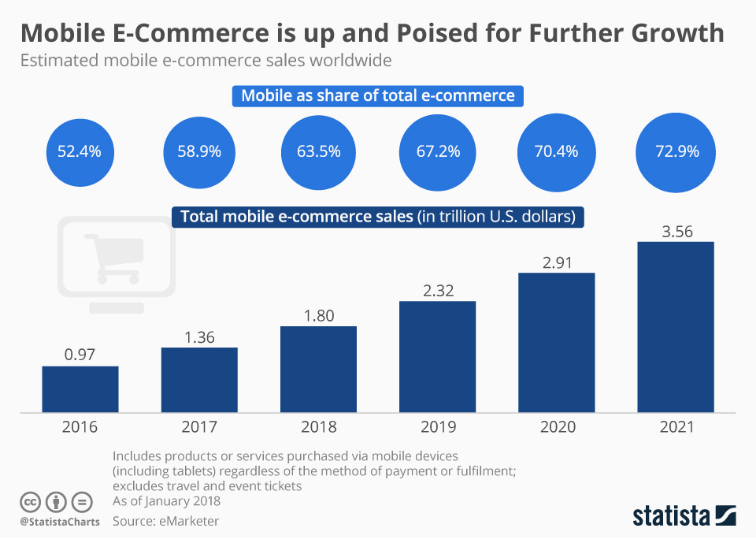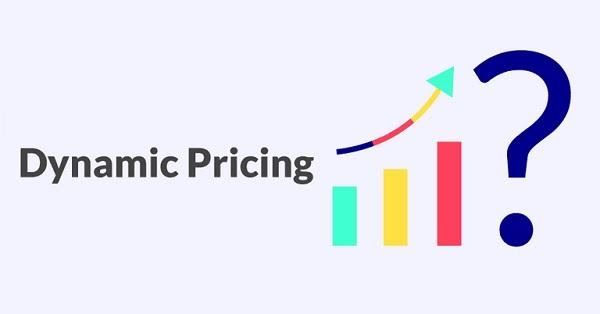For businesses the world over, 2020 has been a wild-ride. In the midst of socio-economic turbulence, there were opportunities and pitfalls. While some businesses capitalized on the situation, others did not.
The one sector that was impacted for the better was eCommerce. Not only did we see eCommerce giants rake in serious profits, but we all saw a rise in eCommerce adoption rates among businesses from all walks of life.
With more and more businesses shifting towards eCommerce in 2020, it’s expected that the global retail industry will rise to $5.6 million in 2022. This is a massive jump from 2019, when it was just $3.53 trillion.
Ecommerce is an ever-evolving industry with trends and data that go through rapid changes and iterations. To gain the upper-hand against competitors in 2021, read on these eight trends for 2021.
The Rise of Voice Commerce

Voice search has been trending for a while now and in 2021, we might finally see it take center stage.
We’ve seen this trending ever since Amazon Echo and Alexa became mainstream. They’re convenient household assistants that do everything from keeping your schedule up-to-date as well as purchase products for you.
The popularity of voice shopping is rising. It’s gone to such an extent that it’s expected to reach a valuation of $40 billion by 2022.
With convenient technologies like these, it’s easy, now more than ever, to purchase products from the comfort of your home. These devices are not in beta-mode anymore. They are highly accurate and sensitive to voice queries.
Google and Amazon are working heavily on taking these devices international. They’re developing support for region-based languages that can provide more convenience for customers.
All these reasons combined are proof enough that it’s high-time to optimize your stores for voice search.
The following are three ways you can do just that.
- Optimize your content for voice search rather than keywords.
- Offer voice-based navigation on your website and mobile applications.
- Optimize your eCommerce store to allow customers to purchase through voice command.
Omnichannel Shopping

Omnichannel shopping has been around for a while. With the rise of mobile commerce, omnichannel selling is expected to increase in 2021.
To give you a head start on what omnichannel shopping is: it’s the practice of selling products consistently across a range of different channels. It was predicted in 2017 that 73% of consumers use multiple channels when purchasing products.
Not only does omnichannel selling help you sell products across a variety of different arenas, but they also help you gain more customers.
The following are some of the best methods you can use for an ideal omnichannel experience:
- Keep the user experience personalized at every step.
- Offer a variety of delivery options for customers.
- Invest in PWA’s or mobile applications.
AR/VR/AI in Ecommerce

AI, AR, and VR – as we speak, these three are the apex of technological as we speak.
With games like Half-Life: Alyx being totally made for VR, and technologies like Neuralink becoming more advanced as the days progress, technology is slowly morphing from science-fiction to reality.
Ecommerce is expected to benefit from these technologies as well. It is estimated that the eCommerce industry will spend $7.3 billion on AI by 2022. Store owners are now starting to use these technologies for their store purposes with more stores following in their footsteps.
How will AI influence eCommerce?
Essentially speaking, AI works like your in-store assistant by tailoring a personalized experience for you. Think of it as a salesperson in real life recommending products by first asking about your preferences.
With the help of AR/VR, users can inspect a particular product for its quality by inspecting it virtually in a 360-degree environment. This helps the user decide on the product at a more granular level.
These technologies are here to stay and, even if they don’t get the expected application in 2021, they’re certainly going to have their moment sometime in the future. Because of this, it’s important to plan ahead.
Cryptocurrency as a Payment Gateway

Multiple payment gateways are an aspect of eCommerce that has been discussed time and time again. If you don’t have multiple payment options present on your site, you’re going to be losing a fair chunk of your customers to the competition.
Besides other factors, payment options are the main reason why customers choose a specific brand over another. For now, most major eCommerce stores offer a combination of digital wallets as well as popular payment gateways. Businesses operating in specific locations also use payment gateways that are popular in that region.
While these are a must-have for now, another payment option has emerged in the form of cryptocurrencies. Bitcoin, Ethereum, Litecoin, among others are expected to go mainstream and used as a payment method for eCommerce stores.
We’re not talking hypotheticals. Recently, Overstock partnered with Coinbase, a Bitcoin platform to enable digital payments through the use of cryptocurrency.
With the rise of cryptocurrencies across the globe, there are expectations that crypto payments will be the future of eCommerce.
The Rise of Visual Ecommerce

The modern eCommerce experience is all about visuals. Moving towards visual commerce can have plenty of advantages since it sets you apart from the competition significantly.
Visual commerce is not just about images and the UX. It’s about making the entire user experience highly modified to be as visually appealing as possible.
Here’s how you can utilize visual eCommerce:
- Change your image formats to WebP or JPEG2000 for better quality.
- Make 3D versions of your products and display them on your store.
- Create visual shopping ads on your Pinterest, Facebook, and other social media to increase website traffic and sales.
The Rise of Mobile Commerce

What was once an alternative to going to the store has now transformed into the most comfortable way of making a purchase. Consumers now trust eCommerce purchases and are comfortable in making a purchase through it.
As of this writing, mobile eCommerce is expected to account for 73% of the industry’s sales. If your website is not mobile friendly, then you’re going to be facing plenty of cart abandonment issues.
Improving the user-experience for mobile devices is the way to go.
As an online seller, you should focus on improving the customer experience for mobile users. Here are several ways you can do that:
- Examine your website for mobile responsiveness. Google Mobile Friendly Test is a good first step you can take to start with. Just enter your URL and it will show whether or not your site is responsive. It also highlights other important issues relevant to the mobile friendliness of the website.
- Invest in Progressive Webs Apps (PWAs). They’re fast to browse, and they can showcase products even if the user doesn’t have an internet connection present.
- Optimize the user-experience to be as smooth as possible. Ideally, you should give precedence to the checkout experience of your website.
- Perform a manual audit of your site to see whether or not all the elements displayed on the site are displayed properly.
Become Sustainable

People misunderstand the implications of going towards sustainable business practices. It’s a rising force that sets you apart from the competition. In addition to that, it also makes you more popular amidst the population.
The modern consumer is environmentally aware. 65% consumers favor brands that focus on sustainability driven practices. Ecommerce brands in general, are more focused towards that goal. The eCommerce giant Amazon pledged to completely reduce their carbon emissions by 2040.
If you’re an eCommerce store looking to go green, then there are several considerations that you need to take into account:
- Have a clear goal towards sustainable practices. When you have an idea of what you want to achieve with such practices, only then can you sell that proposition to the customer.
- Optimize your delivery packaging or use eco-friendly packaging. The contents that make up the package should have less of an impact on the environment.
- Reduce the use of paper and go for emails for receipts.
- Reduce energy consumption within official premises.
- If there exists an eco-friendly replacement to your existing workflows or products, then try to move towards that so that it encourages sustainability.
Dynamic Pricing Adoption

Allowing customers to stay competitive all year around, dynamic pricing is something that has the potential to attract more and more customers.
You can have the best product in the world, but if it fails to generate sales, then it’s not worth it.
Assign the right pricing to your products in such a way that you get the best chance at selling your products. Maximum profits should be your prime consideration with your products.
Dynamic pricing helps you optimize the prices of your products. There are plenty of tools available for that purpose and can provide you serious benefits with regards to maximizing sales.
Final Thoughts
For businesses looking to acquire and convert more customers in the coming years, these trends are important. From omnichannel shopping to AR/VR implementation, voice search, and more, keeping these trends in mind can help you improve your eCommerce position significantly against competitors in the future.
Looking to get started with WooCommerce B2B eCommerce on the right track in 2021? B2BWoo is an all-in-one B2B solution for WooCommerce that provides you with all the essentials required to get up and running with B2B.
Read Also
- Five Most Common B2B Ecommerce Mistakes Owners Make When Starting Out
- 6 Biggest Content Marketing Trends That Will Dominate 2021
- Wholesale Distribution Trends For 2021
- Vendor-Based vs Custom eCommerce Solutions: Which One Is Your Right Choice?
- How to Start a B2B Ecommerce Store in 2021?
- How To Create a Bulk Order Form for B2B Online Stores on WooCommerce
